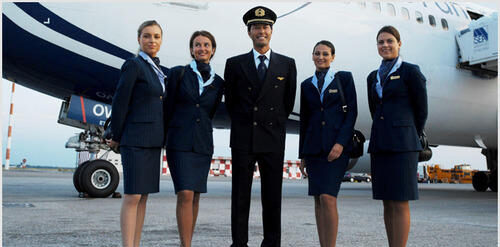Flying has always been one of humanity’s greatest achievements. The ability to take to the skies, crossing continents and oceans within hours, is a marvel of modern engineering and science. But have you ever wondered how airplanes actually fly? If so, this beginner’s guide will take you through the fundamental principles that keep planes in the air, making them one of the safest and most efficient modes of transportation available today.
The Basics: How Does Flight Work?
At the core of an airplane’s ability to fly are four main forces: lift, weight, thrust, and drag. Understanding how these forces interact is key to grasping the basics of flight.
- Lift: Lift is the force that pushes the airplane upwards. It is created by the wings as they move through the air. The shape of the wings is crucial—they are designed with a curved top and a flatter bottom. This shape causes the air moving over the top of the wing to travel faster than the air underneath. According to Bernoulli’s principle, the faster air on top creates a lower pressure compared to the higher pressure beneath the wing, generating lift.
- Weight: Weight is the force caused by gravity pulling the airplane toward the Earth. For an airplane to ascend, the lift must be greater than the weight. The distribution of weight across the airplane, known as the center of gravity, is critical for maintaining stability during flight.
- Thrust: Thrust is the forward force produced by the airplane’s engines. It propels the airplane through the air. The more powerful the engine, the more thrust it generates, helping the airplane overcome drag and maintain a steady speed.
- Drag: Drag is the resistance an airplane encounters as it moves through the air. It’s essentially the friction between the airplane and the air molecules. Pilots and engineers aim to minimize drag to ensure efficient flight. Streamlined designs, such as the tapered shape of the wings and fuselage, help reduce drag.
The Role of the Wings
The wings of an airplane are not just for show—they are the most crucial component in achieving flight. Their specific design and shape are what make lift possible. The concept behind this is known as the airfoil principle.
An airfoil is the cross-sectional shape of the wing, which is curved on top and flatter on the bottom. When the airplane moves forward, air splits at the front of the wing, with some air going over the top and some passing underneath. The air traveling over the curved top has to move faster to meet up with the air traveling underneath, which creates lower pressure on top and higher pressure below. This difference in pressure results in lift, which pushes the airplane upward.
The Engines: Powering the Journey
While the wings generate lift, it’s the engines that provide the thrust necessary for forward motion. Most commercial airplanes use jet engines, which work on the principle of Newton’s third law of motion: for every action, there is an equal and opposite reaction. Jet engines suck in air, compress it, mix it with fuel, and ignite the mixture. The high-speed exhaust gases expelled from the back of the engine push the airplane forward.
There are various types of jet engines, but the most common in commercial aviation is the turbofan engine. Turbofans are efficient at the high speeds required for long-distance travel and provide a good balance between speed and fuel economy.
Stability and Control
Once airborne, maintaining stability is crucial. Airplanes are designed to be stable, meaning they naturally return to a level flying position if disturbed by turbulence or other factors. Stability is achieved through careful design of the airplane’s shape and the placement of its components.
To control the airplane, pilots use a combination of ailerons, rudders, and elevators:
- Ailerons are located on the trailing edges of the wings and control roll, which allows the airplane to bank left or right.
- Rudders are on the vertical tail fin and control yaw, which helps the airplane turn left or right.
- Elevators are on the horizontal tailplane and control pitch, allowing the airplane to climb or descend.
These control surfaces work together to allow the pilot to maneuver the airplane precisely, ensuring a safe and smooth flight.
The Science of Flight in Everyday Education
For those intrigued by the science and engineering behind flight, there are specialized educational paths available. For instance, students interested in pursuing a career in aviation can explore options like the Aviation College in Udaipur. This institution provides comprehensive training and education in aviation, equipping students with the knowledge and skills required to succeed in the industry.
In addition to aviation-specific courses, understanding the broader context of travel and hospitality can also be beneficial. For example, a Hotel Management College in Udaipur offers programs that blend the excitement of travel with the business and management skills necessary for the hospitality industry. These programs can complement an education in aviation, providing a well-rounded foundation for those looking to enter the dynamic world of travel and tourism.
Conclusion: The Wonders of Flight
Understanding how airplanes fly requires a grasp of the basic forces at play and the intricate engineering that makes air travel possible. From the lift generated by the wings to the thrust provided by the engines, every aspect of an airplane’s design is focused on overcoming gravity and friction to achieve smooth, efficient flight.
For those passionate about this field, there are numerous educational opportunities to explore, from specialized aviation programs to broader studies in related industries. Whether you’re interested in the mechanics of flight or the business of travel, the sky is truly the limit.

